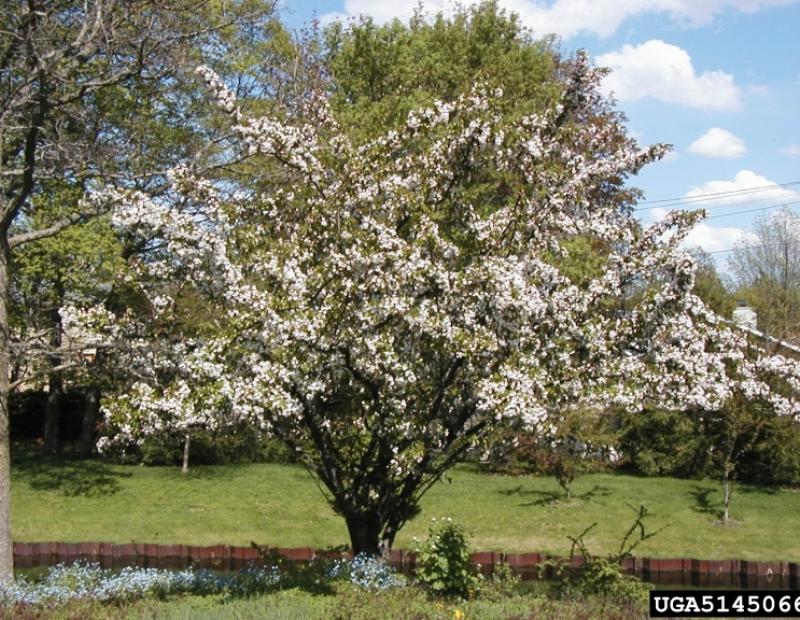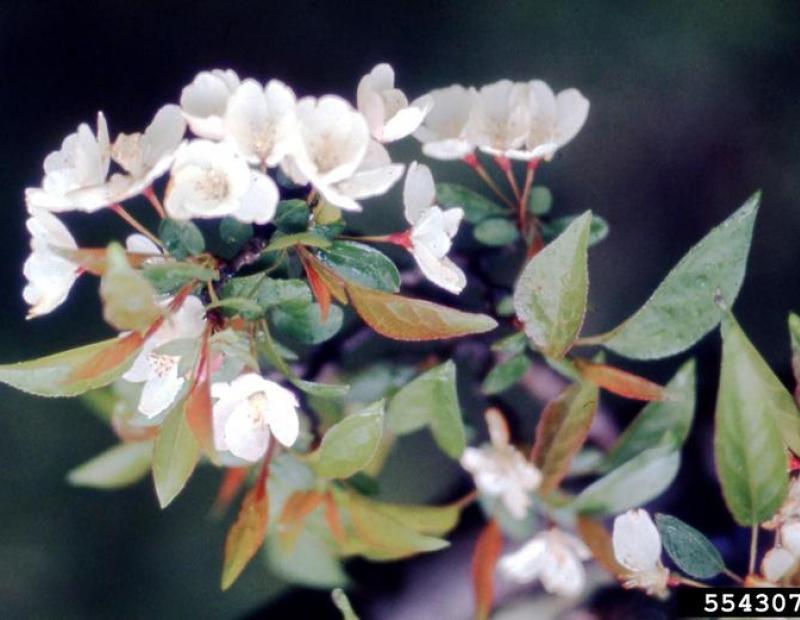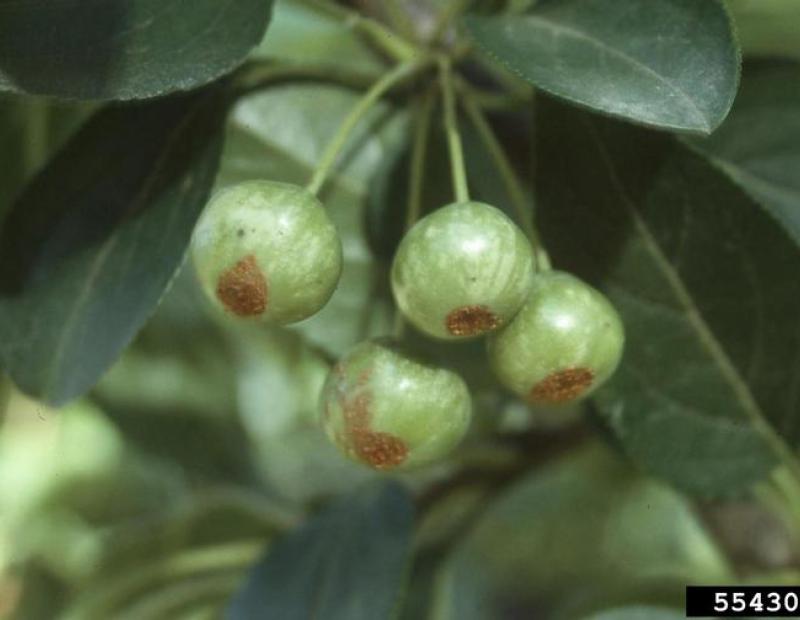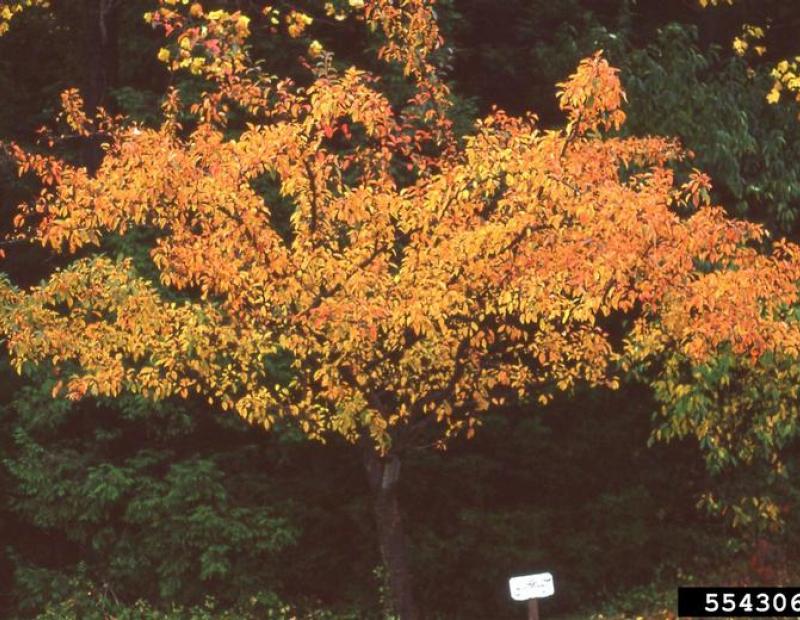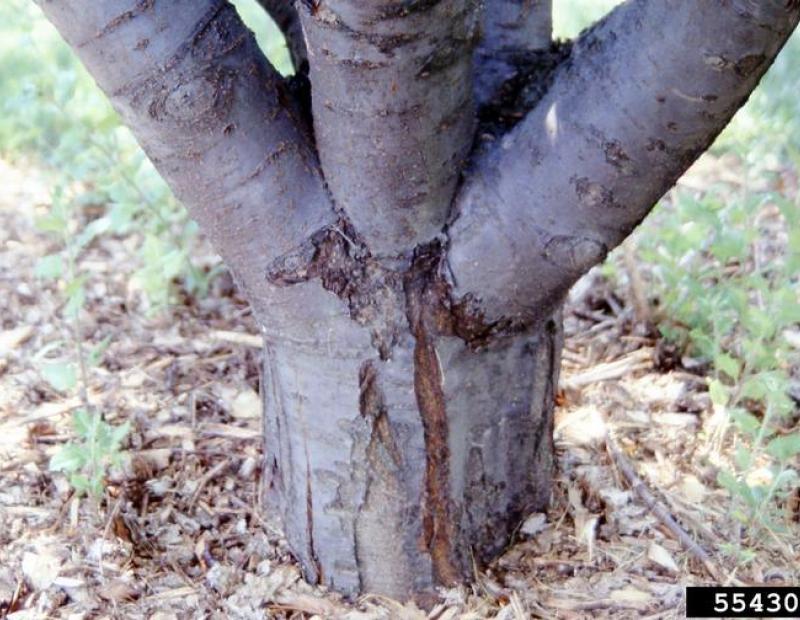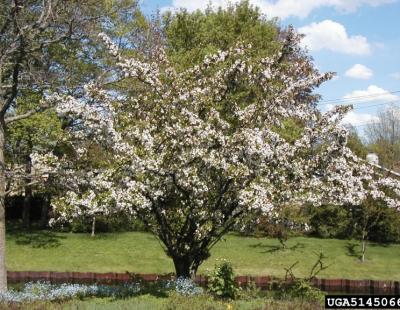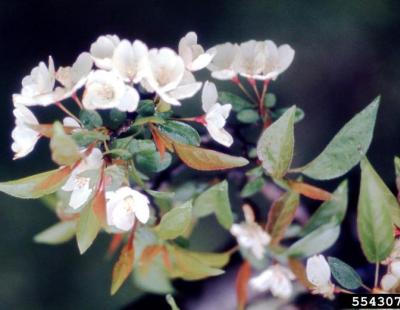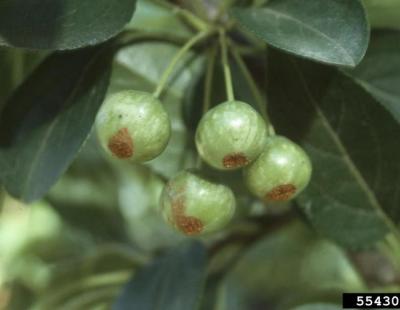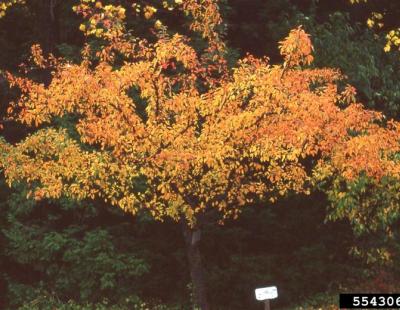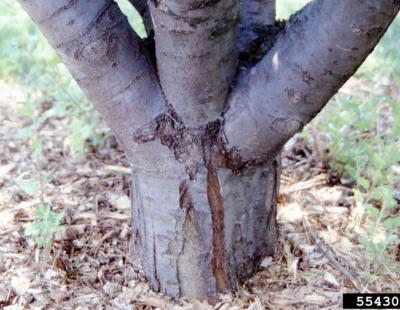Vertical Tabs
- Tea crabapple is a member of the Rose family (Rosaceae)
- Tea crabapple is a 15-20 feet-tall deciduous tree with a broad, vase-shaped canopy. The tree’s bark is dark brown/gray and flakey. The species is most conspicuous in spring when abundant, fragrant one-and-a-half inch-wide pink to white flowers cover the tree’s branches. (1)
Leaves
Leaves are alternately arranged, ovate to oval in shape, dark green and glossy, up to four inches long with serrate margins. New growth is bronze in color. (2)
Flowers
Flowers are abundant, fragrant, white to pink in color, spring blooming, and approximately one and half inches in diameter. (2)
Fruit/Seed
Tea crabapple’s fruits are small pomes. Each fruit is green-yellow with a red ‘blush’ often on one side, and approximately half an inch in diameter. (2)
Little is known about the ecological impact of Tea crabapple. A capable naturalizer, Tea crabapple’s appearance in habitats outside of the garden setting warrants concern and further scrutiny of this species’ habitat preferences, means of spread, adaptability and reproductive potential. The species produces abundant fruit which are dispersed long distances by birds and small mammals. It appears to be relatively shade-tolerant and could potentially alter the diversity and structure of the communities it invades.
Biological Control
No biological control option is currently available.
Manual or Mechanical Control
Pulling / Digging Up: Hand pulling or digging young plants is effective, if time consuming.
Mowing: Mowing, weed whacking or cutting will cause larger individuals to re-sprout. This tactic is more effective when followed up with chemical treatment.
Girdling: Girdling is an effective method of control if used with a chemical control method such as cut stump or hack-and-squirt application. Otherwise, re-sprouting is likely to occur. (5)
Prescribed Fire: No information available
Prescribed Grazing: No information available
Soil Tilling: No information available
Mulching: No information available
Solarization: Not applicable
Hot Foam Spray: No information available
Chemical Control
The pesticide application rates and usage herein are recommendations based on research and interviews with land managers. When considering the use of pesticides, it is your responsibility to fully understand the laws, regulations and best practices required to apply pesticides in a responsible manner. At times, the pest you seek to treat may not be on a pesticide label, requiring a 2ee exemption from NYSDEC. Always thoroughly read the label of any pesticide and consult the NYSDEC or a licensed pesticide applicator with questions.
Foliar Spray: A 2% solution of glyphosate is likely effective. Always read all instructions on the label. (5)
Cut Stump: A 50% solution of glyphosate applied immediately to cut stems is likely effective in controlling this species. (5)
Basal Bark: A 20% solution of triclopyr is likely effective. (5)
Stem Injection: No information available
Pre-Emergent Spray: No information available
General management overview and recommendation
As with any other invasive infestation complex, large stands of Tea crabapple tree are best managed via a combination of mechanical and chemical means. Larger individuals should be treated with a cut stump or basal bark herbicide application, while small individuals can be pulled or sprayed. All managed infestations should be monitored for at several years to ensure exhaustion of the seed bank and to monitor for any re-sprouting. Any new seedlings can be hand pulled. New sprouts must be treated with foliar spray or continually re-cut.
Post treatment monitoring
Controlled populations should be revisited at least 2 times a season for at least 4 years to ensure exhaustion of the seed bank and to check no re-sprouting has occurred.
Disposal Methods
Mowed, cut, or pulled tea crabapple can be composted or chipped so long as management occurred prior to fruiting.
REFERENCES
- https://hort.ifas.ufl.edu/database/documents/pdf/tree_fact_sheets/malhup...
- http://www.hort.uconn.edu/plants/detail.php?pid=285
- http://www.inspection.gc.ca/plants/plants-with-novel-traits/applicants/d...
- https://plants.usda.gov/core/profile?symbol=MAHU2
- Interview with Trillium Invasive Species Management INC
- https://gobotany.newenglandwild.org/species/malus/floribunda/

